.
Yoga is not just about bending your body into different forms, it is also about finding balance in your life. It is a holistic practice that includes meditation, breathing exercises (pranayama), and physical postures (asanas) that help you become healthier overall. Some yoga poses can help beginners build a strong foundation while also making them stronger, more flexible, and clearer in their thinking.
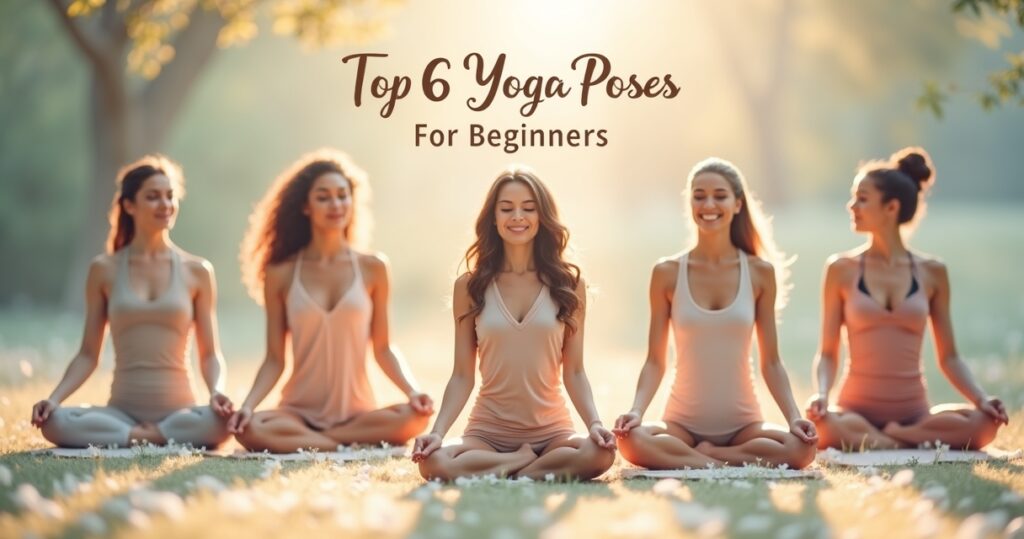
This article will discuss the best yoga poses for beginners and provide step-by-step instructions on how to do each pose and what it can achieve for you. Whether you are new to yoga or want to get better at it, these poses can help you get started on the right foot.
Top 6 Yoga Poses for Beginners
1. Downward Facing Dog (Adho Mukha Svanasana)
Downward-Facing Dog is a full-body stretch that works and tones many muscles, especially those in the arms, legs, and back. It also helps you relax and stand up straight. This brings more blood to the brain, which wakes up the mind and helps you focus.
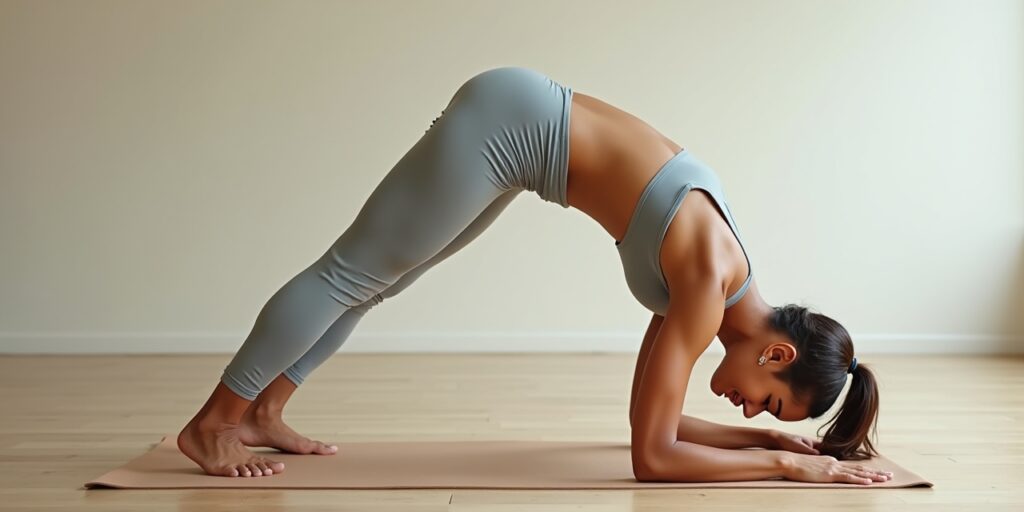
How to do it:
To begin, place your hands and knees on the mat. Your hips should be in line with your knees and your wrists should be in line with your shoulders.
Raise your hips toward the ceiling so that your body forms an inverted ‘V’. If you’re new to this, your heels don’t have to touch the floor; just push them toward the mat.
Your feet should be about hip-width apart and your hands should be about shoulder-width apart.
Hold the pose for 15 to 30 seconds, allowing your body to tense and relax with each breath.
Place your head between your upper arms and make sure your ears are in line with them.
Tip:
- Keep your body moving, especially your thighs and core. Don’t arch your chest or back.
- If you can’t hold the pose, you can bend your knees slightly.
2. Child’s Pose (Balasana)
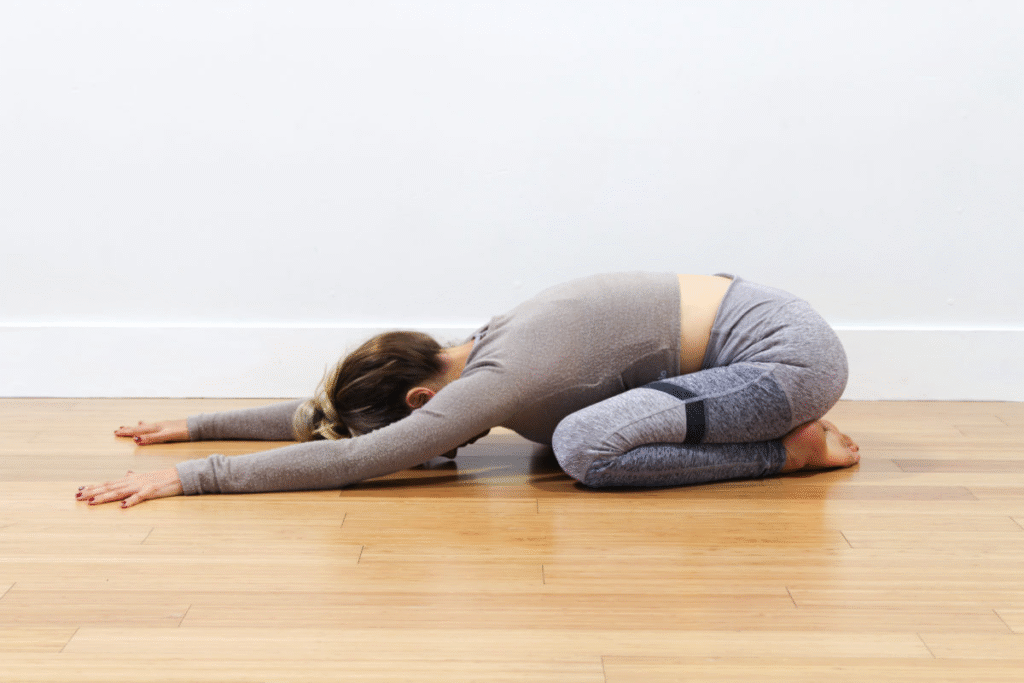
Child’s Pose is a great way to relax your hips, thighs, and back. It helps you relax, calm your nerves, and release tension. This pose also helps you become more flexible by stretching your knees, hips, and ankles.
How to do it:
First, bring your big toes together and spread your knees apart.
Place your hands on the mat and slowly sit back on your heels.
Place your hands in front of you or at your sides, and then bend over so that your forehead touches the floor.
Pay attention to how you breathe and let your chest expand with each breath.
Tip:
- If you can’t touch the floor, you can place a pillow or block under your forehead.
- You can stay in this position for as long as you want, but try to stay there for at least 30 to 60 seconds.
3. Warrior I (Virabhadrasana I)
Warrior 1 is a strength pose that stretches the waist, chest, and lungs and strengthens the arms, legs, and core. This asana is a great way to start a workout because it also helps with balance and stability.

How to do it:
First, stand with your feet three to four feet apart.
Bend your right knee until it is just above your ankle, and then step your right foot out to the side. Your left leg should remain straight, but your left foot should be turned slightly inward.
Place your hands above your head, with your palms facing each other. Relax your shoulders and open your chest.
After holding for 30 to 60 seconds, switch sides.
Tip:
Make sure your knee doesn’t go past your ankle. It should be at a right angle.
Instead of turning your hips out, keep them square and facing forward.
4. Tree Pose (Vrksasana)
Tree pose helps you achieve better balance, better alignment, and better focus. It strengthens your legs, ankles, and core, as well as opens your hips and stretches your inner thighs.
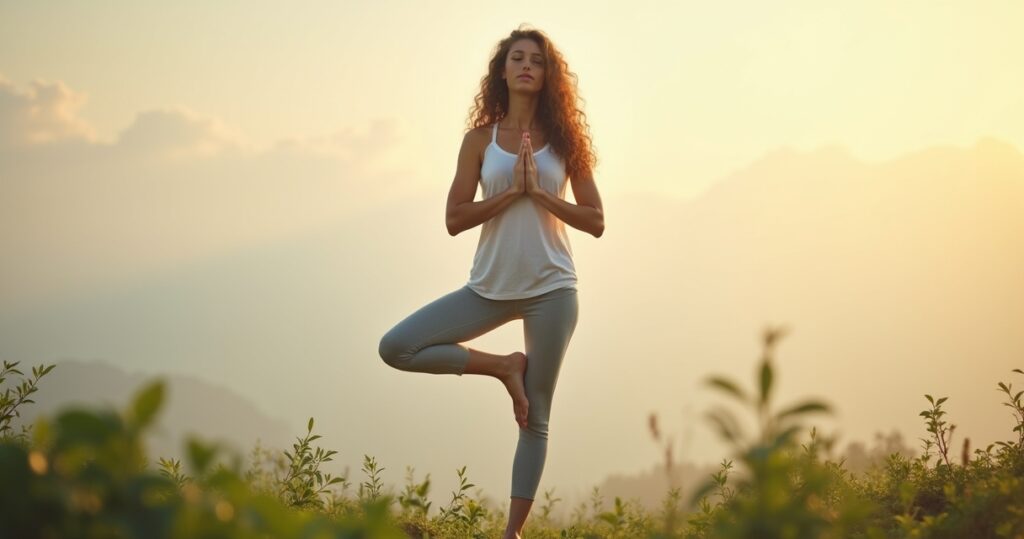
How to do it:
To begin, stand with your feet together and your hands at your sides.
Shift your weight onto your left foot and lift your right leg so that it rests on your inner left thigh, calf, or ankle. Do not rest it on your knee.
Read More: 10 Benefits of Doing Yoga Daily
Join your hands together as if you are praying. If you feel stable, raise your hands above your head and place your palms facing each other.
After holding for 30 to 60 seconds, switch sides.
Tip:
To maintain your balance, look at one object at a time.
If you are having trouble keeping your balance, move your foot down on your foot, near your ankle or calf.
5. Cobra Pose (Bhujangasana)
Cobra Pose is great for your asana because it opens your chest and widens your spine. It helps people with lower back problems by strengthening their arms, shoulders, and lower back.

How to do it:
First, lie on a mat with your elbows close to your body and your hands slightly below your shoulders.
Keeping your back straight, press into your palms and lift your chest off the mat. Bend your elbows slightly.
You can also move your feet and keep them engaged by pressing them into the floor.
Breathe deeply for 15 to 30 seconds while staying in this position.
Tip:
Don’t let your lower back arch too much. Instead of using your back to lift, use your upper body and core strength.
Don’t put your arms behind your back. Instead, bend them slightly.
6. Bridge Pose (Setu Bandhasana)
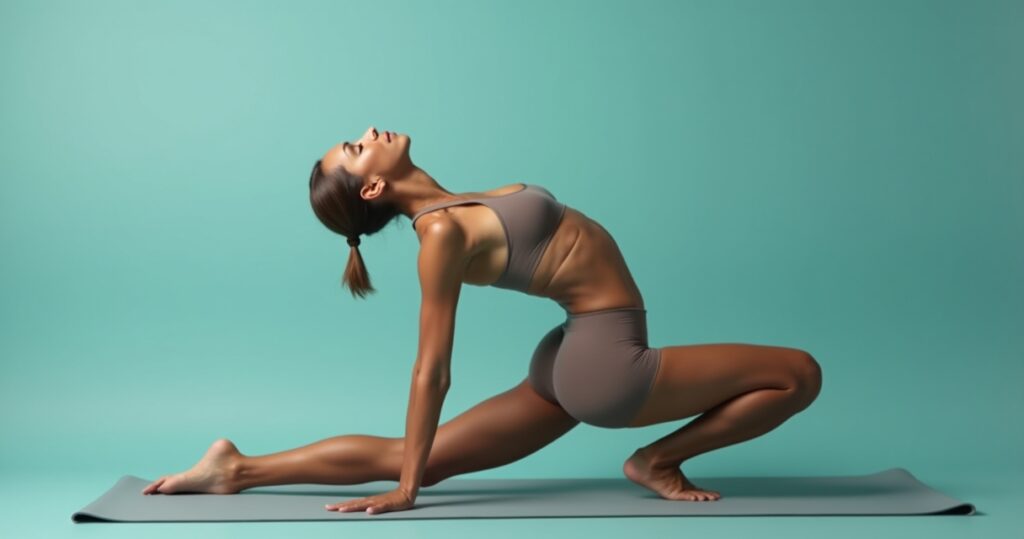
Bridge pose is great for your lower back, thighs, and buttocks because it strengthens them. It’s a great pose to practice after sitting for a long time because it relaxes the spine and opens the chest.
How to do it:
When you’re lying down, bend your knees and place your feet flat on the floor.
Push your feet into the floor and lift your hips up toward the ceiling so that a straight line is formed from your shoulders to your knees.
Place your hands and arms on the floor and lower your palms down and relax.
After holding for 20 to 30 seconds, release and lower yourself down.
Tip:
Don’t arch your back too much. The goal is to lift your hips while keeping your body straight.
If you want to stretch even further, try placing your hands behind your back.
Conclusion
Doing yoga every day will help you become stronger, more flexible, and clearer in your mind. Being consistent and paying attention to your body is incredibly important. When doing yoga, remember that the journey is as important as the goal.
Yoga is not about getting into the right poses; it is about getting to know your body and how it works best. Here are some easy poses that are good for beginners. You can move on to more difficult yoga poses as you gain skill.
Frequently Asked Questions
Q1. What are some wonderful qualities about yoga for folks who are new to it?
Yoga is helpful for both your body and mind in many ways, especially for people who are just starting out. It helps you relax, builds your muscles, makes you more flexible, and enhances your balance. Yoga can also help you stand up straighter, offer you more energy, and help you think more clearly and stay focused.
Q2. How often should a beginner perform yoga?
If you’re new to it, it’s best to start with two or three sessions a week. This gives your body time to become used to it and get stronger over time. You can do it 4 to 5 times a week over time if you’re okay with it. Remember that being consistent is crucial.
Q3. How long should I hold each yoga pose?
People who are new to it usually say to hold each position for 15 to 30 seconds. Breathe deeply and allow your body relax into the stance. As you get stronger and more flexible, you can steadily add more time.
Q4. Is yoga good for losing weight?
Yoga isn’t just about losing weight; it can also aid by making muscles stronger, speeding up metabolism, and stopping people from eating too much when they’re anxious. Vinyasa and Power Yoga are two styles of yoga that are more vigorous and may help you lose weight and burn calories.
Q5. What time of day is best for doing yoga?
Your schedule and what you prefer will determine when you can do yoga. Many people believe that doing yoga in the morning is a great way to begin the day. But sessions at night can help you relax and let go of stress after a long day. It’s incredibly important to choose a time that works for you and enables you practise often.
Q6. Do I need any special equipment for yoga?
You don’t need a lot of gear to start doing yoga. You just need a good yoga mat to be comfortable and supported. You don’t have to use yoga blocks for extra stability, a strap for stretching, or clothes that are comfortable and let you move. You may also use things like pillows or blankets to make your practice more comfortable at home.
Q7. Will yoga help me stand up straighter?
Yes, yoga is an excellent approach to fix your posture. Some yoga poses that assist straighten the spine and build the muscles that maintain good posture are Mountain Pose (Tadasana), Downward-Facing Dog, and Cobra Pose. Doing yoga every day can help you stand up straighter and not slouch as much.
Q8. What should I eat before I do yoga?
You should eat a light snack an hour or two before your yoga class. Pick items that give you energy without making you sleepy. A banana, a little smoothie, or some nuts are all good options. Don’t consume a lot of food right before your practice, as it could make some poses uncomfortable.
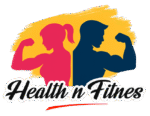
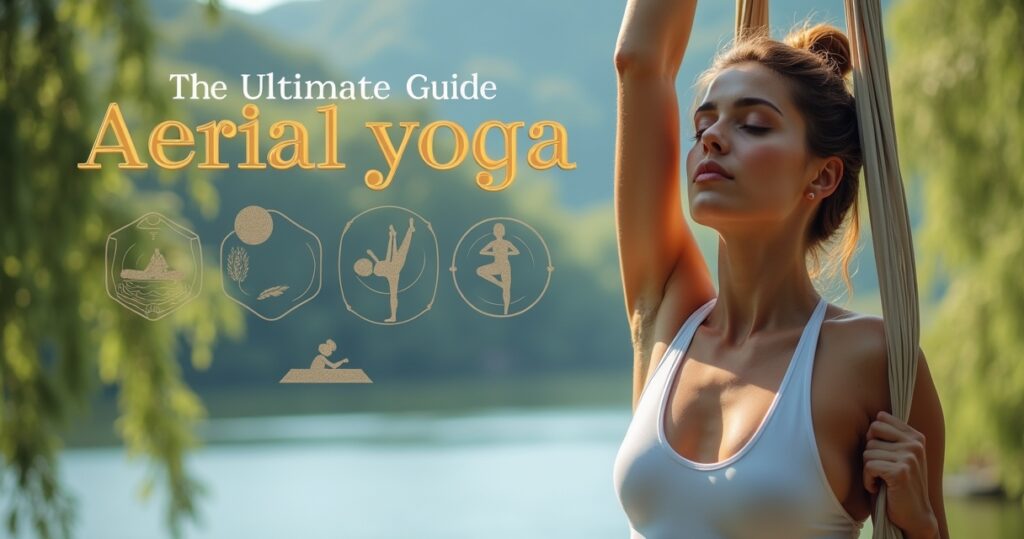
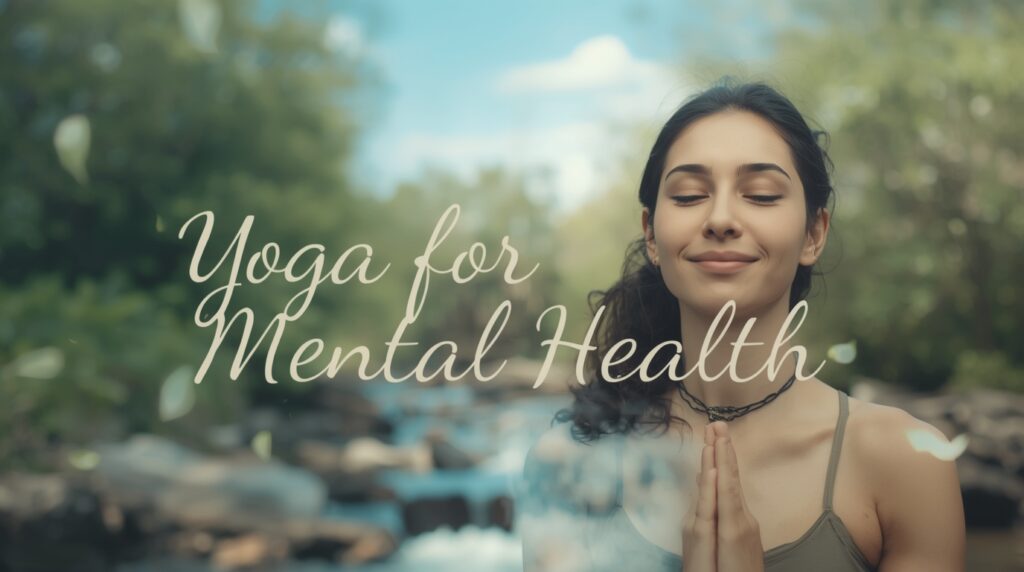
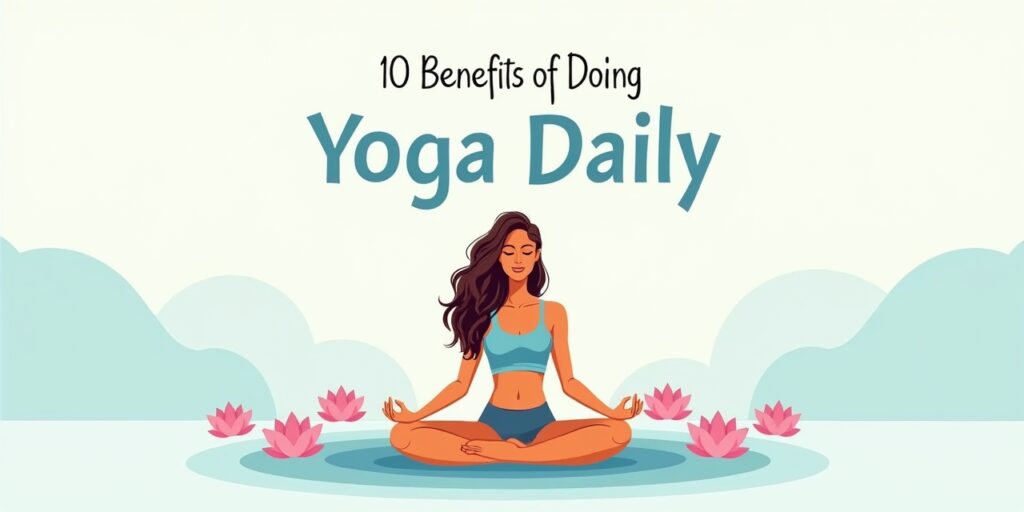
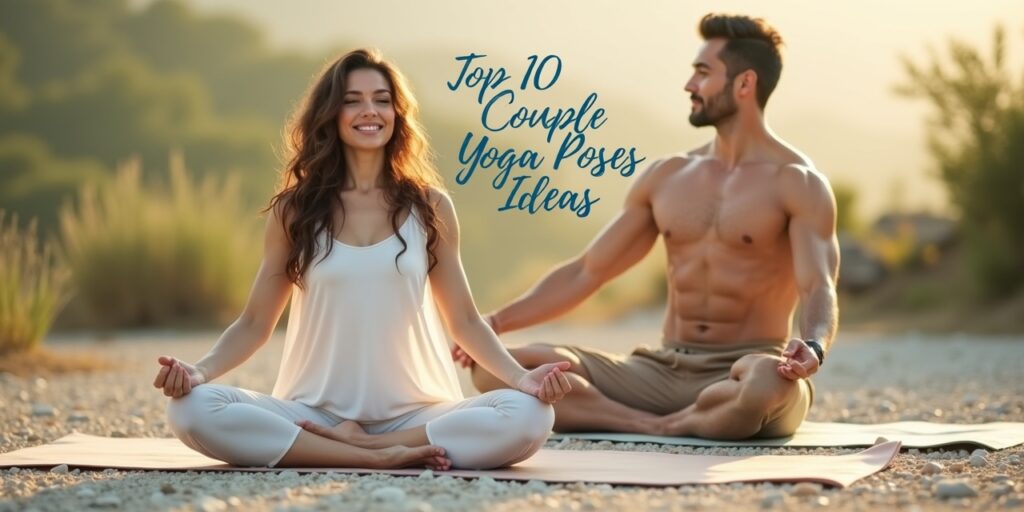
Pingback: The Ultimate Guide to Aerial Yoga: Benefits, Poses, and Everything - Healthn Fitnes